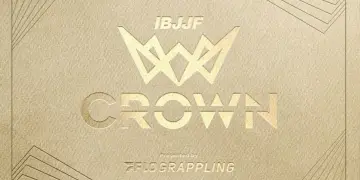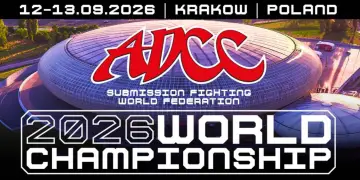This article on lessons learned from the first CJI is part of our Craig Jones Invitational 2024 coverage. To get live results, play by play, and commentary, we’ll have a live updates article running all weekend.
The very first Craig Jones Invitational took place on August 16th and 17th, 2024 and now that the dust has settled on the event, there are 5 key lessons that we have learned from it. It was a truly incredible event that was action-packed from start to finish and it should definitely be considered a resounding success. Craig Jones raised the bar for competitor pay in the sport but he also produced an entertaining event at the same time. The format was so different from everything that has come before, it can be tough to pinpoint exactly where it succeeded most. There are certain elements of the event that stood out more than others though, and other promotions should definitely be taking notes.
5 Lessons We Learned From The First Craig Jones Invitational
Some of the lessons that can be learned from the first Craig Jones Invitational are going to be difficult for other promotions to actually use, but there’s nothing stopping the biggest brands in the sport like ADCC. Any promotion that wants to be a prominent figure in the sport should have been paying attention, and if they were then we might see the landscape of professional grappling change dramatically over the next few years. CJI challenged a lot of the conventional wisdom around promoting events and even the sport itself, and adaptation is key to survival.
Wrestlers Can’t Just Walk Into Jiu-Jitsu
It’s a bit of a cliche in grappling, but many people think that the best wrestlers in the world could dominate in BJJ if they only made the transition. They’ll even point to the success that Nicky Rodriguez has had over the last few years as proof of the theory. The Craig Jones Invitational put that to the test by inviting Rodriguez and three elite wrestlers with different degrees of BJJ experience. Rodriguez won the whole thing, but it’s taken him years of developing and adapting to reach this level. Coincidentally, how well the other three did was directly related to how much BJJ competition experience they’ve had.
Pat Downey has had a few matches and he made it to the quarter-final, Jason Nolf was making his second appearance and gave a good account of himself but still got submitted in the opening round, while Daniel Greg Kerkvliet couldn’t really offer anything to Fellipe Andrew in his first ever BJJ match. Having a ton of mat-time from wrestling obviously helps of course, and it’s why so many wrestlers first trying out Jiu-Jitsu do well in local gyms. But at the highest level of the sport, a lot of the exchanges are so alien that it’s going to take years for most wrestlers to reach the highest level of success. It turns out that Rodriguez is the exception in that respect, not the rule.
The Pit Walls Are The Future
The first Craig Jones Invitational had some of the most exciting matches in the history of the sport, and one of the lessons can be learned is very clear. The angled walls created the perfect conditions for non-stop action and completely removed competitors’ ability to play on the edges of the combat area. A common sight at any tournament using the traditional matted area is that some grapplers will allow themselves to be driven off the mat in order to avoid being taken down, and that’s a legitimate path to victory.
With that problem solved, it forced competitors to engage more and encouraged them to work for counters or actually defend takedowns rather than relying on the referee to do it for them. Even in matches where exceeding the mat’s limits isn’t intentional, it still causes a complete break in the action and disrupts the flow of the match. Contrast that with the amazing match between Kade Ruotolo and Andrew Tackett, where both men went full tilt all around the alley in ways that wouldn’t be possible in a flat matted area.
Rounds Do Work
Attempting to create exciting matches is one of the lessons we can learn from the Craig Jones Invitational that actually came about from a big risk. The conventional wisdom in professional grappling has always been to have a single round and the higher the stakes in play, the longer that round will be. Most matches are 10, 15, or 20 minutes and it’s almost become a self-fulfilling prophecy at this point. Because competitors have more time, they pace themselves for that time and they get finishes towards the end of it.
Jones decided to use three five-minute rounds instead, and he received plenty of criticism for it at first. Many people thought that it wouldn’t be long enough to work and there wouldn’t be enough action. The same thing happened though, every competitor paced themselves for the time that they had and got their rest between rounds. That meant that aggressive competitors were able to go at it for the entire match and more relaxed competitors increased their activity in an attempt to win rounds.
Australia Is Reaching The Next Level
Lachlan Giles, Kit Dale, and Craig Jones really put Australia on the map as far as professional grappling goes, but the future is clearly in safe hands. Giles and Dale have both retired and Jones is now focusing more on his career as a promoter, but the current generation of talent is truly fantastic. That’s something that anyone watching the first Craig Jones Invitational could see clearly, and there were lessons to be learned from both divisions.
Levi Jones-Leary was a promising gi competitor for years but his recent transition to no gi competition has been a breath of fresh air to the professional grappling circuit. He beat three of the best grapplers in the world to reach the final and even though he didn’t win, the message was clear. In the over 80kg division, Lucas Kanard came in on short notice and was largely overlooked. He changed that immediately, as he submitted top contener Victor Hugo incredibly quickly. Both Jones-Leary and Kanard will be ones to watch over the next few years and they could both reach a level beyond the Australians who came before them.
Less Actually Is More
One of the biggest points that Craig Jones made when he created the Craig Jones Invitational was that he had already taken lessons from other promotions, and he knew you didn’t need a massive production cost to create a good event. It turns out that he was right, there are so many expensive elements to live shows that promoters think add value to their event but it really isn’t the case. What they add is miniscule compared to the value that the competitors themselves bring to the table.
By motivating them with the biggest prize money in the sport and creating a brand new ruleset with the sole goal of increasing the action as much as possible, Jones proved his point in spades. He didn’t expensive set-ups with incredible technology and the biggest announcers in the world like Bruce Buffer. All he needed to do was to get the sport’s best competitors together and make every step necessary to force them to engage. From there, the entertainment literally took care of itself.
For more of our opinion pieces on various topics, visit our opinion piece archives.













